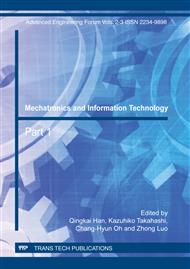p.162
p.167
p.172
p.176
p.182
p.188
p.193
p.200
p.205
A New Extension of the Rank Transform for Stereo Matching
Abstract:
Stereo matching methods often use rank transform to deal with image distortions and brightness differences prior to matching but a pixel in the rank transformed image may look more similar to its neighbor, which would cause matching ambiguity. We tackle this problem with two proposals. Firstly, instead of using two values 0 and 1,we increase the discriminative power of the rank transform by using a linear, smooth transition zone between 0 and 1 for intensities that are close together. Secondly, we propose a new Bayesian stereo matching model by not only considering the similarity between left and right image pixels but also considering the ambiguity level of them in their own image independently. We test our algorithm on both intensity and color images with brightnesss differences. Corresponding 2D disparity maps and 3D reconstruction results verify the effectiveness of our method.
Info:
Periodical:
Pages:
182-187
Citation:
Online since:
December 2011
Authors:
Keywords:
Permissions:
Share:
Citation:


